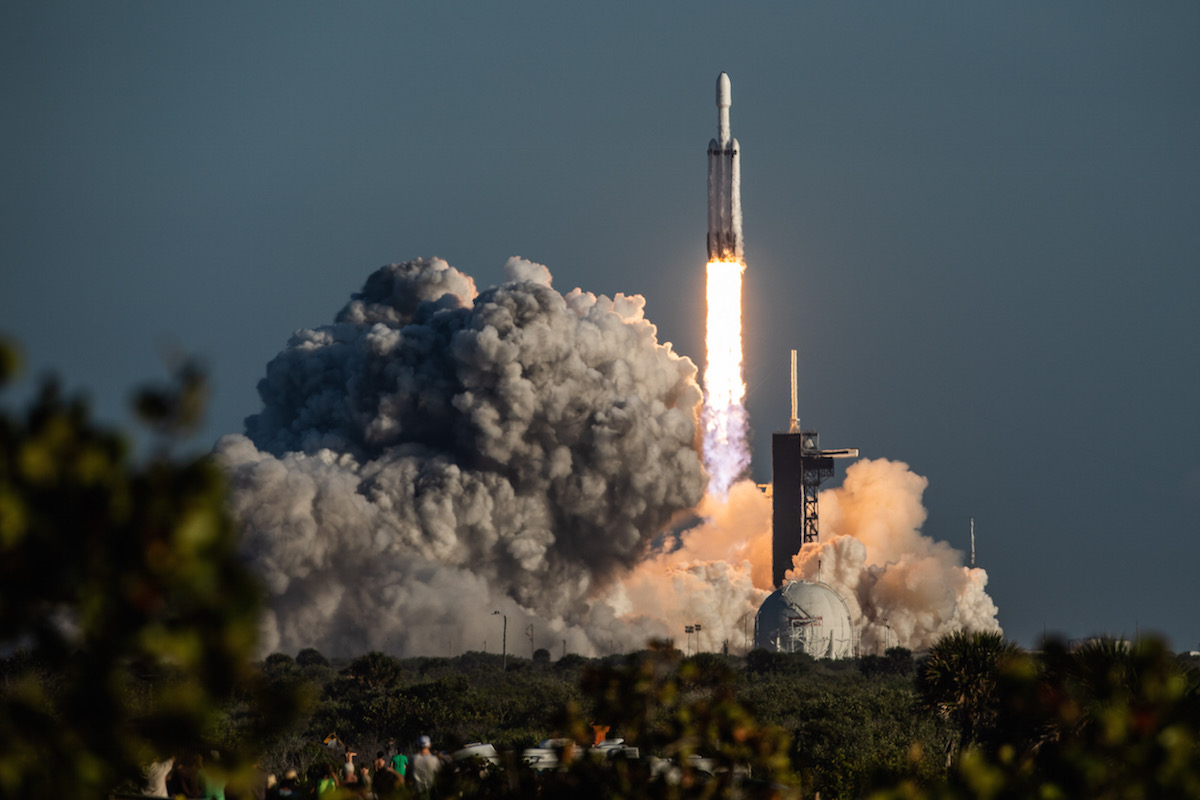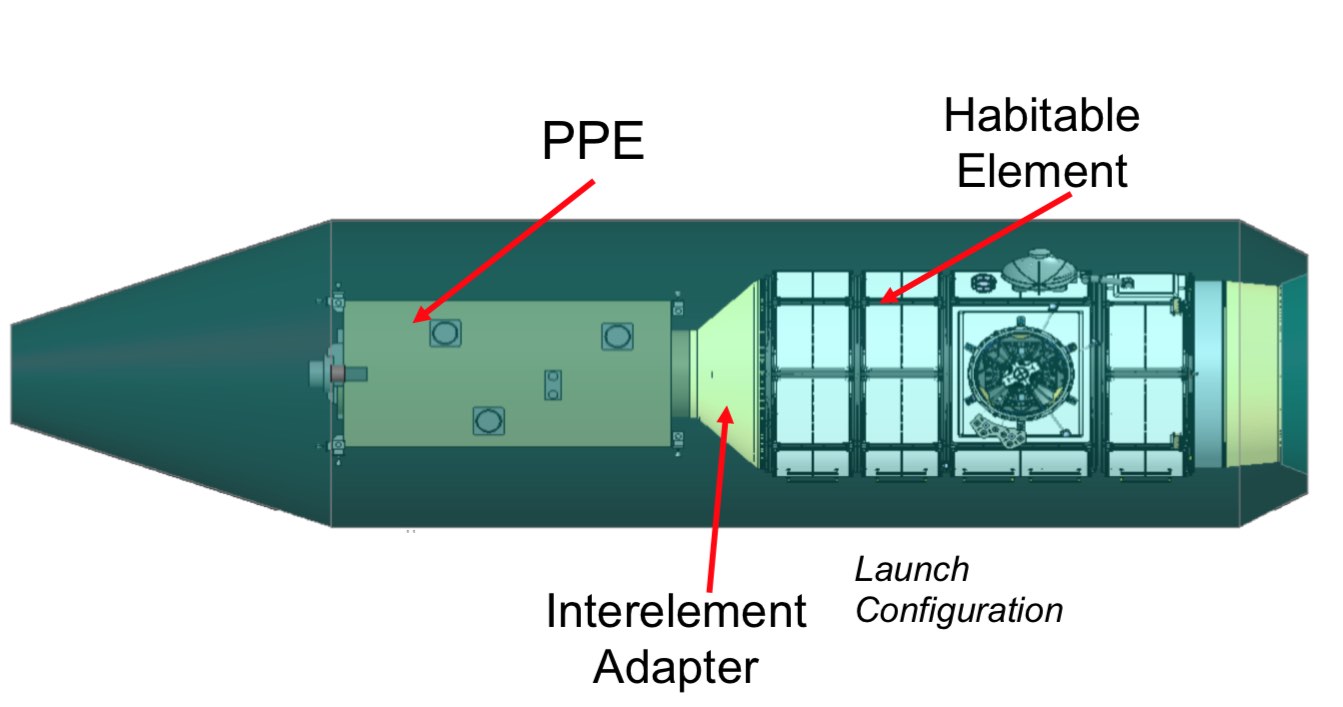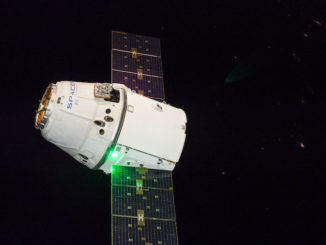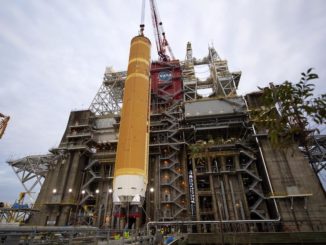
NASA announced Tuesday it has awarded SpaceX a $331 million contract to launch the first two pieces of the Gateway lunar outpost in 2024 using a modified version of the Falcon Heavy rocket to hurl the massive core of the deep space station toward the moon.
The Gateway’s Power and Propulsion Element and Habitation and Logistics Outpost will launch in tandem no earlier than May 2024 aboard the Falcon Heavy rocket from pad 39A at NASA’s Kennedy Space Center in Florida.
The $331.8 million launch services contract, awarded by NASA’s Launch Services Program at Kennedy, includes the Falcon Heavy launch and “other mission-related costs,” the agency said in a statement. The $331 million contract value is nearly three times the price NASA is paying for a Falcon Heavy launch in July 2022 with the Psyche asteroid probe.
The PPE and the HALO modules are the first two pieces of the Gateway mini-space station, which NASA envisions will serve as a waypoint for astronauts in transit to and from the moon’s surface in the space agency’s Artemis lunar exploration program. Contributions from international partners, such as a joint European-Japanese habitation module and a Canadian robotic arm, will eventually join the Gateway in orbit around the moon, forming an outpost about one-sixth the size of the International Space Station.
The Power and Propulsion Element, built by Maxar, will be powered by large solar array wings, and will use plasma rocket jets for deep space maneuvers. It will also provide communications and attitude control for the Gateway complex. The HALO, developed by Northrop Grumman in partnership with Thales Alenia Space in Italy, will provide the initial living quarters for astronauts on the Gateway, and will have docking ports for arriving and departing cargo and crew ships.
SpaceX’s Falcon Heavy rocket will haul the PPE and HALO into a high-altitude orbit around Earth. The PPE’s solar-electric thrusters will guide the stack toward the moon, where the Gateway will enter an elliptical lunar orbit to take position for the docking of Orion crew capsules with astronauts. NASA intends for human-rated lunar landers to also link up with the Gateway in orbit around the moon, and the landing craft could be refueled at the Gateway for multiple trips to and from the lunar surface.
The combined function of the HALO and Orion life support systems will sustain up to four astronauts for up to 30 days on the Gateway, according to NASA.
The Trump administration set a 2024 schedule goal for the first astronauts to return to the moon’s surface in NASA’s Artemis program. The Biden White House has said it supports the Artemis program, although the new administration has not said whether it will stick with the 2024 schedule, which was already facing stiff technical and funding headwinds before President Trump left office.
NASA decided last year to launch the PPE and HALO elements on the same rocket. The decision reversed NASA’s previous Gateway acquisition strategy, which would have launched the two elements on separate rockets before they automatically docked in deep space.

The tandem launch of the PPE and HALO sections requires a rocket with an extended payload shroud. The payload fairing currently flying on SpaceX’s Falcon Heavy is not long enough for the job, but SpaceX plans to introduce an extended fairing for future U.S. national security satellites, along with a new vertical integration hangar at pad 39A to enable the attachment of military payloads in a vertical orientation at the launch site.
The new fairing design and launch pad integration tower are part of a Pentagon launch services agreement SpaceX won last year. ULA won a similar Defense Department launch contract, and the two companies will share national security launch duties through 2027.
The fairing and integration building are required for SpaceX to be able to launch all of the military’s space missions, and the enlarged shroud is also an enabler for the Falcon Heavy to launch the Gateway.
SpaceX is on contract for other parts of NASA’s Artemis architecture.
The company’s Dragon XL cargo vehicle will deliver supplies to the Gateway space station. The Dragon XL missions will also launch on Falcon Heavy rockets.
A version of SpaceX’s next-generation Starship vehicle, which engineers are designing as a fully reusable rocket, could be used as a lunar lander to transport crews to and from the lunar surface. SpaceX is competing against teams led by Blue Origin and Dynetics for the full lunar lander development contract.
NASA plans to launch astronauts from Earth aboard Orion capsules flying on top of the government-owned Space Launch System heavy-lift rocket.
SpaceX has launched three Falcon Heavy rocket missions to date, all successfully, and the company has at least two more scheduled this year. With the Gateway launch contract, SpaceX has seven confirmed Falcon Heavy missions in its backlog, including two U.S. Space Force missions this year, launches of a Viasat broadband communications satellite and NASA’s Psyche asteroid explorer in 2022, and two Dragon XL cargo missions to the Gateway.
The Falcon Heavy is made up of three modified Falcon 9 first stage boosters connected together in a triple-core configuration. The rocket’s 27 Merlin main engines produce some 5.1 million pounds of thrust at liftoff, more than any other currently operational rocket.
NASA’s inspector general reported in November that the agency has spent more than $500 million on Gateway design work to date.
Despite the decision to combine the PPE and HALO onto a single launch, which NASA said would save money and simplify development, the launch of the Gateway’s power element has been delayed from December 2022 to May 2024.
“The development schedules for both the PPE and HALO have been negatively impacted by the agency’s still-evolving Gateway requirements, including NASA’s decision to co-manifest and launch the two elements on the same commercial rocket rather than separately as initially intended,” the inspector general said last year.”

The inspector general also cited the Trump administration’s 2024 schedule goal for returning astronauts to the moon, although NASA was not counting on using the Gateway for the first Artemis lunar landing mission, at least as proposed in the previous administration.
“Compounding these issues is the 2024 lunar mandate that drove the accelerated development schedule in the first place and resulted in a lack of schedule margin in the Gateway program,” the inspector general said.
NASA’s choice to co-manifest the PPE and HALO will add 10 months to the modules’ travel time to their operating post in a near-rectilinear halo orbit around the moon, the inspector general said.
“The decision to launch the PPE and HALO together, while avoiding the cost of a second commercial launch vehicle, has contributed to cost increases due to the redesign of several components, an elevated launch risk, and a longer duration flight to lunar orbit,” the inspector general said.
Under the original Gateway launch strategy, Maxar was responsible for booking the launch for the Power and Propulsion Element. Maxar had already contracted SpaceX for the solo launch of the PPE, an agreement that the inspector general said was terminated in favor of the combined launch of the PPE and the HALO, which came with additional requirements, such as the Falcon Heavy with the extended fairing.
Maxar had already paid SpaceX $27.5 million in payments for the PPE launch contract before terminating the agreement, the inspector general said.
“In our judgment, NASA’s acceleration of the acquisition for both the PPE and HALO before fully defining the Gateway’s requirements added significant costs to the projects’ development efforts and increases the risk of future schedule delays and additional cost increases,” the inspector general said.
Email the author.
Follow Stephen Clark on Twitter: @StephenClark1.



